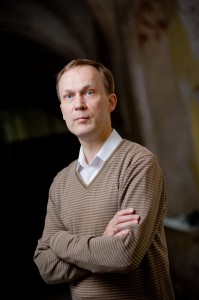The Phenomenon of Dynamics in Baroque Music for Harpsichord
Doctoral student: Balys Vaitkus
Supervisors: Prof. Giedrė Lukšaitė-Mrázková, Prof. Habil. Dr. Gražina Daunoravičienė
Department: Organ and Harpsichord
Duration: 2011–2015
Abstract
The history of harpsichord music in the first half of the 20th century is just brimming with attempts to add some sound shading possibilities of the piano, its more sonorous brother. In this respect, the work of innovative instrument workshops Érard and Pleyel in Paris energised by creative work of Wanda Landowska, the first globally acclaimed performing harpsichordist, must be mentioned. However, the results of the harpsichord modernisation were far from successful and failed to help this instrument make it out of the shadows. Moreover, for most of the century the harpsichord was dubiously labelled as a dynamically challenged instrument and perceptions began to change gradually thanks to the proponents of interpretation based on the historical tradition who found inspiration in the remaining instruments from the Baroque period, the golden age of the harpsichord.
The author looks into the reasons why this once “the most perfect instrument” (Jean Denis, 1650) became depreciated as the understanding of dynamics changed. The author presumes that the possibilities of dynamics of the harpsichord cannot be viewed from the romantic perspective and from that of the dynamics of the 20th century and that the harpsichord had a broad range of various dynamic means to meet the needs of expressive playing of music in the Baroque period. The objective of the project is to use the analysis of theoretical treatises, samples of instrument’s setup and sheet music of the Baroque period as well as acoustic research tools to show that the alleged limitations of the harpsichord to produce sound and the range of nuances controlled by the performer were quite proportionate to the idioms of both the solo and ensemble repertoire of the harpsichord during the Baroque era.


